UK UFO Sightings
Sun, 02 Aug 2009 19:34 UTC
Posted: August 2, 2009
Date of Sighting: August 1st 2009
Time: 10pm
Witness Statement: I was stood in my
garden having a fag and iI saw like a fire ball in the sky. I thought
it was a plane on fire because it looked like parts of it had fallen
off still on fire but they did not fall to the ground, they all flowed
the same westerly direction. I believe it was any explanation.

© Space Weather
Looking
northeast around midnight on August 11th-12th. The red dot is the
Perseid radiant. Although Perseid meteors can appear in any part of the
sky, all of their tails will point back to the radiant.
Looking
northeast around midnight on August 11th-12th. The red dot is the
Perseid radiant. Although Perseid meteors can appear in any part of the
sky, all of their tails will point back to the radiant.
Earth
is entering a stream of dusty debris from Comet Swift-Tuttle, the
source of the annual Perseid meteor shower. Although the shower won't
peak until August 11th and 12th, the show is already getting underway.
Don't get too excited, cautions Bill Cooke of NASA's Meteoroid
Environment Office. "We're just in the outskirts of the debris stream
now. If you go out at night and stare at the sky, you'll probably only
see a few Perseids per hour."
This will change, however, as August unfolds.
"Earth passes through the densest part of the debris stream
sometime on August 12th. Then, you could see dozens of meteors per
hour."
For sky watchers in North America, the watch begins after
nightfall on August 11th and continues until sunrise on the 12th.
Veteran observers suggest the following strategy: Unfold a blanket on a
flat patch of ground. Lie down and look up. Perseids can appear in any
part of the sky, their tails all pointing back to the shower's radiant
in the constellation Perseus. Get away from city lights if you can.
There is one light you cannot escape on August 12th.
The 55% gibbous Moon will glare down from the constellation Aries just
next door to the shower's radiant in Perseus. The Moon is beautiful,
but don't stare at it. Bright moonlight ruins night vision and it will
wipe out any faint Perseids in that part of the sky.
The Moon is least troublesome during the early evening hours
of August 11th. Around 9 to 11 p.m. local time (your local time), both
Perseus and the Moon will be hanging low in the north. This low profile
reduces lunar glare while positioning the shower's radiant for a nice
display of Earthgrazers.
"Earthgrazers are meteors that approach from the horizon and
skim the atmosphere overhead like a stone skipping across the surface
of a pond," explains Cooke. "They are long, slow and colorful - among
the most beautiful of meteors." He notes that an hour of watching may
net only a few of these at most, but seeing even one can make the whole
night worthwhile.
This image of "Block Island" was taken on July 28, 2009, with the front
hazard-identification camera on NASA's Mars Exploration Rover
Opportunity.
The Opportunity rover has eyed an odd-shaped, dark rock, about 0.6
meters (2 feet) across on the surface of Mars, which may be a
meteorite. The team spotted the rock called "Block Island," on July 18,
2009, in the opposite direction from which it was driving. The rover
then backtracked some 250 meters (820 feet) to study it closer.
Scientists will be testing the rock with the alpha particle X-ray
spectrometer to get composition measurements and to confirm if indeed
it is a meteorite.
A dark cloud of debris from the July 19th impact on Jupiter continues
to be visible through backyard telescopes. Now, for the first time, you
can see it in 3D. Cross your eyes and behold:
Astrophotographer
"Wah!" made the stereo pair using an 8-inch telescope in Hong Kong. He
took two pictures of Jupiter four minutes apart, allowing the planet's
rotation to provide the necessary right- and left-eye views. If you
have trouble seeing the 3D effect, try staring at this larger version.
In 3D, the impact mark seems to be a hole in the clouds. In fact, it is
a cloud, filled with dark cindery bits of a mystery-impactor that
exploded like 2000 megatons of TNT. High altitude winds are spreading
the debris around the south pole, enlarging the dark mark for easy
viewing.
Amateur astronomers can monitor the cloud near Jupiter's
System II longitude 210°. For the predicted times when it will cross
the planet's central meridian, add 2 hours and 6 minutes to Sky and Telescope's predicted transit times for Jupiter's Great Red Spot. [sky map]
A barrage of comets may have delivered Earth's oceans around 3.85 billion years ago, a new study suggests.
Scientists have long suspected that Earth and its near neighbors were
walloped by tens of thousands of impactors during an ancient event
known as the Late Heavy Bombardment.
This pummeling disfigured the moon, leaving behind massive
craters that are still visible, preserved for millennia in the moon's
airless environment. But it's been unclear whether the impactors were
icy comets or rocky asteroids.
Now, based on levels of a certain metal in ancient Earth
rocks, a team led by Uffe Jorgensen of the Niels Bohr Institute in
Denmark says comets were the culprits.
Whether Earth had oceans before any comets arrived has been intensely debated, Jorgensen noted.
Some experts say enough water could have existed from the moment Earth
formed, while others argue that the young planet's heat would have
vaporized any liquids.
"It's the kind of subject that can make scientists fight physically with one another," Jorgensen said.
His team thinks early Earth was just too hot to retain large
bodies of water. But by the time of the Late Heavy Bombardment, things
had cooled down, allowing meltwater from the flurry of comets to become
the world's first seas.
"We may sip a piece of the impactors every time we drink a
glass of water," the study authors write in their paper, which will be
published in an upcoming issue of the journal Icarus.
Comets' Metal
Jorgensen and colleagues arrived at this conclusion after
measuring the levels of iridium in surface and near-surface rocks from
Greenland - some of the oldest known rocks in the world, dating back to
the time of the bombardment.
Iridium is a scarce metal on Earth, but it's relatively common in comets and asteroids.
According to the team's calculations, iridium levels in the rocks
around an asteroid impact should be about 18,000 parts per trillion.
A comet impact, meanwhile, should leave behind only about 130 parts per
trillion. That's because comets would carry less metal, since they're
mostly made of loosely packed water ice with some rocky debris.
Comets also strike Earth at higher speeds, because of their longer orbits around the sun.
As a result, "the explosion formed by a comet is more violent
than from an asteroid, and the amount of material - including iridium -
thrown back into space is larger," Jorgensen said.
The team found that the Greenland rocks contained about 150
parts per trillion of iridium, supporting the idea that comets were the
main players in the Late Heavy Bombardment.
All that ice from the comet swarm then thawed to create a
global ocean more than half a mile (about a kilometer) deep, the team
calculates.
The moon, meanwhile, lacks an ocean because its gravity is
much weaker than Earth's, so most if not all of the debris from a comet
strike would be thrown back into space, Jorgensen said.
But Nicolas Dauphas, a geophysicist at the University of
Chicago, isn't yet convinced that the bombardment featured comets, not
asteroids.
The new study, he said, relies on too many estimates - such as the predicted amount of iridium deposited following an impact.
"I am afraid [they have] stretched their conclusions too far," Dauphas said.
Accidental Life?
Chandra Wickramasinghe, an astrobiologist at Cardiff University
in the U.K. not involved in the new study, also supports the theory of
an ancient comet bombardment.
And he thinks it's possible that comets seeded Earth not only with water but with life.
According to some controversial studies, the oldest evidence
for life on Earth dates back to about 3.85 billion years ago, around
the time of the Late Heavy Bombardment, he noted.
"It could be a coincidence, but to me it would be a remarkable coincidence," Wickramasinghe said.
Study co-author Jorgensen is inclined to agree.
"The [Late Heavy Bombardment] was an accident," he said. "If it
had not happened, there would have been no water on Earth, and no
life."
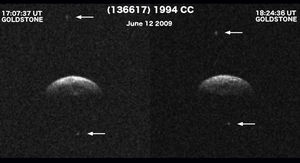
© NASA/JPL/GSSR
Radar
imaging at NASA's Goldstone Solar System Radar on June 12 and 14, 2009,
revealed that near-Earth asteroid 1994 CC is a triple system.
Radar
imaging at NASA's Goldstone Solar System Radar on June 12 and 14, 2009,
revealed that near-Earth asteroid 1994 CC is a triple system.
Radar
imaging at NASA's Goldstone Solar System Radar on June 12 and 14, 2009,
revealed that near-Earth asteroid 1994 CC is a triple system. Asteroid
1994 CC encountered Earth within 2.52 million kilometers (1.56 million
miles) on June 10. Prior to the flyby, very little was known about this celestial body.
1994 CC is only the second triple system known in the near-Earth
population. A team led by Marina Brozovic and Lance Benner, both
scientists at NASA's Jet Propulsion Laboratory in Pasadena, Calif.,
made the discovery.
1994 CC consists of a central object about 700 meters (2,300
feet) in diameter that has two smaller moons revolving around it.
Preliminary analysis suggests that the two small satellites are at
least 50 meters (164 feet) in diameter. Radar observations at Arecibo
Observatory in Puerto Rico, led by the center's director Mike Nolan,
also detected all three objects, and the combined observations from
Goldstone and Arecibo will be utilized by JPL scientists and their
colleagues to study 1994 CC's orbital and physical properties.
The next comparable Earth flyby for asteroid 1994 CC
will occur in the year 2074 when the space rock trio flies past Earth
at a distance of two-and-a-half million kilometers (1.6 million miles).
Of the hundreds of near-Earth asteroids observed by radar, only about 1 percent are triple systems.
Composition measurements by NASA's Mars Exploration Rover Opportunity confirm that this rock on the Martian surface is an iron-nickel meteorite.
This image combines exposures from the left eye and right eye of the
rover's panoramic camera to provide a three-dimensional view when seen
through red-green glasses with the red lens on the left. The camera
took the component images during the 1,961st Martian day, or sol, of
Opportunity's mission on Mars (July 31), after approaching close enough
to touch the rock with tools on the rover's robotic arm.
Researchers have informally named the rock "Block
Island." With a width of about two-thirds of a meter (2 feet), it is
the largest meteorite yet found on Mars. Opportunity found a smaller
iron-nickel meteorite, called "Heat Shield Rock" in late 2004.
For
Northern Hemisphere observers, August is usually regarded as "meteor
month," with one of the best displays of the year reaching its peak
near midmonth.
That display is, of course, the annual Perseid Meteor Shower,
beloved by everyone from meteor enthusiasts to summer campers. This
year is expected to produce an above average number of "shooting stars"
that could offer a rewarding experience to skywatchers around the
globe.
There's just one problem: A bright moon will drown out fainter meteors.
The moon will be at last quarter the night of Aug. 13 and it
will be at a rather bright waning gibbous phase a night or two earlier,
seriously hampering observation of the peak of the Perseids, predicted
to occur late on the nights of Aug. 11 and 12.
Moonrise on Aug. 11 comes at around 10:20 p.m., while on Aug.
12 it's around 10:50 p.m. The moon will be hovering below and to the
left of the Great Square of Pegasus these nights and not all that far
from the constellation Perseus, from where the meteors will appear to
emanate (hence the name "Perseid").
Perseus, does not begin to climb high up into the northeast
sky until around midnight; by dawn it's nearly overhead. But bright
moonlight will flood the sky through most of those two key nights and
will certainly play havoc with any serious attempts to observe these
meteors.
Shower already underway
The Perseids are already around, having been active only in a very weak
and scattered form since around July 17, as is typically the case for
this annual shower.
But a noticeable upswing in Perseid activity traditionally
begins during the second week of August, leading up to their peak. They
are typically fast, bright and occasionally leave persistent trains.
And every once in a while, a Perseid fireball will blaze forth, bright
enough to be quite spectacular and more than capable to attract
attention even in bright moonlight.
Unfortunately, because the moon was also at full phase on Aug.
5 it will always be above the horizon during the predawn morning hours
(when Perseid viewing is best) in the days leading up to the peak. So
even the gradual increase in the shower will be spoiled by moonlight.
The moon arrives at last quarter on Aug. 13 and thereafter its
light becomes much less objectionable, but by that time the peak of the
display has passed, leaving only a few lingering Perseid stragglers in
its wake.
But nonetheless, the 2009 Perseids will be still be worth watching.
Comet crumbs
We know today that these meteors are actually the dross of the
Swift-Tuttle comet. Discovered back in 1862, this comet takes
approximately 130 years to circle the sun. And in much the same way
that the Tempel-Tuttle comet leaves a trail of debris along its orbit
to produce the spectacular Leonid Meteors of November, the Swift-Tuttle
comet produces a similar debris trail along its orbit to cause the
Perseids.
Indeed, every year during mid-August, when the Earth passes
close to the orbit of Swift-Tuttle, the material left behind by the
comet from its previous visits, ram into our atmosphere at
approximately 37 miles (60 kilometers) per second and create bright
streaks of light in our midsummer night skies.
And according to two meteor researchers, each working independently,
2009 could turn out to be an unusually intense Perseid year.
Mikhail Maslov of Russia has determined that within a matter
of several hours on the morning of Aug. 12, the Earth will come close
to three trails of dust shed by the Swift-Tuttle comet from three prior
visits to the vicinity of the Sun (in 1610, 1737 and 1861). All three
encounters will all occur within a roughly 4-hour time frame between 4
and 8 hours UT, which will be particularly favorable for eastern North
America where this interval corresponds to midnight to 4 a.m. on Aug.
12; the constellation of Perseus will be gradually climbing the
northeast sky during this time frame.
According to Maslov, the Earth will be passing only 87,000
miles (140,000 km) from the center of the 1610 trail at 8:07 UT (4:07
a.m. EDT).
In the absence of moonlight, an observer might see up to 200
meteors per hour around that time, a number that sadly - because of the
bright moon - won't in 2009. Overall, though, the Perseids might still
put on a good display despite the interfering moonlight, with at least
the brighter meteors being visible to patient observers.
Another researcher, Jeremie Vaubaillon of Caltech, used a
computer simulation to depict Earth's passage through the Perseids in
2009. Vaubaillon's simulation clearly shows Earth encountering
significant meteor activity from about 0 hours UT on Aug. 12 through
about 6 hours UT on Aug. 13, possibly suggesting better than average
Perseid activity worldwide for both the late-night hours of Aug. 11 and
Aug. 12, local times.
Is it safe?
Many years ago, a phone call came into New York's Hayden
Planetarium. The caller sounded very concerned after hearing a radio
announcement of an upcoming Perseid display and wanted to know if it
would be dangerous to stay outdoors on the peak night of the shower
(perhaps assuming there was a danger of getting hit by cosmic debris).
These meteoroids, however, are no bigger than sand grains or
pebbles, have the consistency of cigar ash and are consumed dozens of
miles above our heads. The caller was passed along to the Planetarium's
then-Chief Astronomer, Dr. Kenneth L. Franklin (1923-2007).
Franklin quickly allayed any fears by cheerfully commenting
that there are only two dangers from watching for Perseid meteors:
getting drenched with dew and falling asleep!
* Top 10 Perseid Meteor Shower Facts
* Meteor Watching 101: Tips and terms
* Perseid Meteor Gallery 2004, 2006
Debris from the July 19th mystery-impact on Jupiter has split into
three clouds. The trifurcation is evident in this August 7th image
taken by Rick Schrantz using a 10-inch telescope at his backyard
observatory in Nicholasville, Kentucky:
Other observers have noticed the same thing. "There appear to be 3
distinct impact scars now, somewhat linear in shape and perhaps larger
than previous days," reports Joel Warren of Amarillo, Texas. He took these pictures using an 8-inch telescope.
Jupiter's upper atmosphere is a dynamic place. The cindery impact
debris appears to be caught up in a cascade of turbulent swirls and
eddies, which is literally ripping the cloud apart. Amateur astronomers
can monitor what happens next: The impact is located near Jupiter's
System II longitude 210°. For the predicted times when it will cross
the planet's central meridian, add 2 hours and 6 minutes to Sky and Telescope's predicted transit times for Jupiter's Great Red Spot.
more images: from Mike Salway of Central Coast, NSW Australia; from Raffaello Lena of Rome, Italy; from Alphajuno of League City, Texas; from Mike Hood of Kathleen, Georgia, USA
Awash in moonlight, the Perseid meteor shower is at present not very
easy to see. Some observers have given up on looking, choosing instead
to monitor the shower by means of radio. This plot from Dave Swan shows
how he is counting more than 300 Perseid radio echoes per hour using a
Yagi antenna and 55.25 MHz receiver in Bransgore, UK:
In the loudspeaker, each echo sounds like a little "ping." It is the
reflection of a distant TV transmitter from the meteor's ionized trail.
Forward scatter meteor detection, as this technique is called, is more
sensitive than ordinary visual observation. Very small meteoroids are
able to create a radio echo without leaving any trace of optical light
in the sky. That's why Swan is counting 300 radio Perseids per hour
while naked-eye observers are couting no more than about 20. Click here to monitor forward scatter stations around the world.
Discover Magazine
Sun, 09 Aug 2009 01:58 UTC
Phil Plait
Deep
in the outer realms of our solar system, well over a billion kilometers
away, something bizarre happened at Saturn's F ring.
I mean, seriously: what the hell happened here?
This is one of the latest pictures
returned from the remarkable human achievement that is the Cassini
spacecraft, a probe the size of a school bus that has been orbiting the
ringed planet since 2004. It's returned one incredible picture after
another, and lately - as Saturn's orbit has brought it to a point where
the rings are nearly edge-on to the Sun - things have gotten not only
spectacular but also really weird.
The rings
are incredibly thin, only a few meters in thickness despite being
hundreds of thousands of kilometers across. Over the past few months,
as the Sun shines almost straight into the rings (instead of down on
them), every bump and irregularity sticks out like, well, like a tree
in the desert. Weird gravitational effects from Saturn's fleet of moons
tune and resonate the countless particles making up the rings, creating beautiful waves and ripples.
But this, this is something new.
It's
not exactly clear what's going on here, even in this slightly zoomed
shot. But it looks for all the world - or worlds - like some small
object on an inclined orbit has punched through Saturn's narrow F ring,
bursting out from underneath, and dragging behind it a wake of
particles from the rings. The upward-angled structure is definitely
real, as witnessed by the shadow it's casting on the ring material to
the lower left. And what's with the bright patch right where this
object seems to have slammed in the rings? Did it shatter millions of
icy particles, revealing their shinier interior material, making them
brighter? Clearly, something awesome and amazing happened here.
My first inclination (haha! Inclination! As always, I
slay me) is to say that there isn't enough material in the rings to
create what amounts to a hydrodynamic wake behind a moving object. When
you move through air you leave a wake behind you, but there are
gazillions of particles per cubic centimeter in the Earth's air at sea
level. I would think that even in Saturn's ring, the density of
particles wouldn't be enough to support a phenomenon like this.
But apparently, I'm wrong. Without doing a full-blown hydrodynamic
calculation it's hard to say what's possible and what isn't. Cassini
scientists are currently doing just that, in order to better understand
what this odd image is trying to tell us.
And I have to wonder: is this a common occurrence? Is this
object on an orbit that intersects the rings so that it plunges up
through them and then again down into them every time it circles
Saturn? If so, how does that affect the rings overall, especially over
millions of years?
Or was this a singular event, some small object whose orbit
was affected by a nearby massive moon, changing its path, putting it on
a collision course with Saturn's mighty and vast ring system? That
seems awfully unlikely...
... but when it comes to this weird, weird place, I've learned
my intuition is monumentally inadequate. Nature, it turns out, has a
far greater imagination than any mere human. We are fated, I think, to
watch Nature unfold before us and try to figure it out after the fact.
But oh, isn't that the joy of science?
Bad Astronomy
Mon, 10 Aug 2009 17:04 UTC
Deep in the outer realms of our solar system,
well over a billion kilometers away, something bizarre happened at
Saturn's F ring.
I mean, seriously: what the hell happened here?
This is one of the latest pictures
returned from the remarkable human achievement that is the Cassini
spacecraft, a probe the size of a school bus that has been orbiting the
ringed planet since 2004. It's returned one incredible picture after
another, and lately - as Saturn's orbit has brought it to a point where
the rings are nearly edge-on to the Sun - things have gotten not only
spectacular but also really weird.
The rings are incredibly thin, only a few meters in thickness
despite being hundreds of thousands of kilometers across. Over the past
few months, as the Sun shines almost straight into the rings (instead
of down on them), every bump and irregularity sticks out like, well,
like a tree in the desert. Weird gravitational effects from Saturn's
fleet of moons tune and resonate the countless particles making up the
rings, creating beautiful waves and ripples.
But this, this is something new.
It's not
exactly clear what's going on here, even in this slightly zoomed shot.
But it looks for all the world - or worlds - like some small object on
an inclined orbit has punched through Saturn's narrow F ring, bursting
out from underneath, and dragging behind it a wake of particles from
the rings. The upward-angled structure is definitely real, as witnessed
by the shadow it's casting on the ring material to the lower left. And
what's with the bright patch right where this object seems to have
slammed in the rings? Did it shatter millions of icy particles,
revealing their shinier interior material, making them brighter?
Clearly, something awesome and amazing happened here.
My first inclination (haha! Inclination! As always, I
slay me) is to say that there isn't enough material in the rings to
create what amounts to a hydrodynamic wake behind a moving object. When
you move through air you leave a wake behind you, but there are
gazillions of particles per cubic centimeter in the Earth's air at sea
level. I would think that even in Saturn's ring, the density of
particles wouldn't be enough to support a phenomenon like this.
But apparently, I'm wrong. Without doing a full-blown
hydrodynamic calculation it's hard to say what's possible and what
isn't. Cassini scientists are currently doing just that, in order to
better understand what this odd image is trying to tell us.
And I have to wonder: is this a common occurrence? Is this
object on an orbit that intersects the rings so that it plunges up
through them and then again down into them every time it circles
Saturn? If so, how does that affect the rings overall, especially over
millions of years?
Or was this a singular event, some small object whose orbit
was affected by a nearby massive moon, changing its path, putting it on
a collision course with Saturn's mighty and vast ring system? That
seems awfully unlikely...
... but when it comes to this weird, weird place, I've learned
my intuition is monumentally inadequate. Nature, it turns out, has a
far greater imagination than any mere human. We are fated, I think, to
watch Nature unfold before us and try to figure it out after the fact.
But oh, isn't that the joy of science?
Comment: Perhaps, if it doesn't come smashing on top of your head.
Seth Borenstein
Associated Press
Wed, 12 Aug 2009 20:18 UTC
NASA
is charged with seeking out nearly all the asteroids that threaten
Earth but doesn't have the money to do the job, a federal report says.
That's because even though Congress assigned the space agency
this mission four years ago, it never gave NASA money to build the
necessary telescopes, the new National Academy of Sciences
report says. Specifically, NASA has been ordered to spot 90 percent of
the potentially deadly rocks hurtling through space by 2020.
Even so, NASA says it's completed about one-third of its assignment with its current telescope system.
NASA estimates that there are about 20,000 asteroids and comets
in our solar system that are potential threats to Earth. They are
larger than 460 feet in diameter - slightly smaller than the Superdome
in New Orleans. So far, scientists know where about 6,000 of these
objects are.
Rocks between 460 feet and 3,280 feet in diameter can
devastate an entire region but not the entire globe, said Lindley
Johnson, NASA's manager of the near-Earth objects program. Objects
bigger than that are even more threatening, of course.
Just last month astronomers were surprised when an object of
unknown size and origin bashed into Jupiter and created an Earth-sized
bruise that is still spreading. Jupiter does get slammed more often
than Earth because of its immense gravity, enormous size and location.
Disaster movies like "Armageddon" and near misses
in previous years may have scared people and alerted them to a serious
issue. But when it comes to doing something about monitoring the
threat, the academy concluded "there has been relatively little effort by the U.S. government."
And the U.S. government is practically the only government doing anything at all, the report found.
"It shows we have a problem we're not addressing," said Louis Friedman,
executive director of the Planetary Society, an advocacy group.
NASA calculated that to spot the asteroids as required by law
would cost about $800 million between now and 2020, either with a new
ground-based telescope or a space observation system, Johnson said. If
NASA got only $300 million it could find most asteroids bigger than
1,000 feet across, he said.
But so far NASA has gotten neither sum.
Comment: Perhaps because the US is busy spending all that money on the so-called 'wars'?
It may never get the money, said John Logsdon, a space policy professor at George Washington University.
"The program is a little bit of a lame duck," Logsdon said. There is not a big enough group pushing for the money, he said.
At the moment, NASA has identified about five near-Earth
objects that pose better than a 1-in-a-million risk of hitting our
planet and being big enough to cause serious damage, Johnson said. That
number changes from time to time, usually with new asteroids added and
old ones removed as more information is gathered on their orbits.
The space rocks astronomers are keeping a closest eye on are a
430-foot diameter rock that has a 1-in-3,000 chance of hitting Earth in
2048 and a much-talked about asteroid, Apophis, which is twice that
size and has a one-in-43,000 chance of hitting in 2036, 2037 or 2069.
Last month, NASA started a new Web site for the public to learn about threatening near-Earth objects.
Comment: Maybe NASA isn't keeping track of them, but someone is and they're not gonna tell us when something is about to hit.

© NASA
Astronaut
photograph ISS020-E-26195 was acquired on July 25, 2009, with a Nikon
D3 digital camera fitted with an 800 mm lens, and is provided by the
ISS Crew Earth Observations experiment and Image Science & Analysis
Laboratory, Johnson Space Center. The image was taken by the Expedition
20 crew.
Astronaut
photograph ISS020-E-26195 was acquired on July 25, 2009, with a Nikon
D3 digital camera fitted with an 800 mm lens, and is provided by the
ISS Crew Earth Observations experiment and Image Science & Analysis
Laboratory, Johnson Space Center. The image was taken by the Expedition
20 crew.
Aorounga Impact Crater is located in the
Sahara Desert, in north-central Chad, and is one of the best-preserved
impact structures in the world. The crater is thought to be middle or
upper Devonian to lower Mississippian (approximately 345 - 370 million
years old) based on the age of the sedimentary rocks deformed by the
impact. Spaceborne Imaging Radar (SIR) data collected in 1994 suggests
that Aorounga is one of a set of three craters formed by the same
impact event. The other two suggested impact structures are buried by
sand deposits.
The concentric ring structure of the Aorounga crater - renamed
Aorounga South in the multiple-crater interpretation of SIR data - is
clearly visible in this detailed astronaut photograph. The central
highland, or peak, of the crater is surrounded by a small sand-filled
trough; this in turn is surrounded by a larger circular trough.
Linear rock ridges alternating with light orange sand
deposits cross the image from upper left to lower right; these are
called yardangs by geomorphologists. Yardangs form by wind erosion of
exposed rock layers in a unidirectional wind field. The wind blows from
the northeast at Aorounga, and sand dunes formed between the yardangs
are actively migrating to the southwest.
The image in this article has been cropped and enhanced to
improve contrast. Lens artifacts have been removed. The International
Space Station Program supports the laboratory to help astronauts take
pictures of Earth that will be of the greatest value to scientists and
the public, and to make those images freely available on the Internet.
Additional images taken by astronauts and cosmonauts can be viewed at
the NASA/JSC Gateway to Astronaut Photography of Earth.
David Shiga
New Scientist
Wed, 12 Aug 2009 16:00 UTC
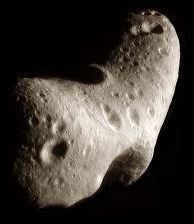
© NEAR Project/NLR/JHUAPL/Goddard SVS/NASA
Asteroid Eros, seen here by NASA's NEAR spacecraft, is 33 kilometres wide, making it the second largest near-Earth asteroid
Asteroid Eros, seen here by NASA's NEAR spacecraft, is 33 kilometres wide, making it the second largest near-Earth asteroid
Existing
sky surveys miss many asteroids smaller than 1 kilometre across,
leaving the door open to damaging impacts on Earth with little or no
warning, a panel of scientists reports. Doing better will require
devoting more powerful telescopes to asteroid hunting, but no one has
committed the funds needed to do so, it says.
Near-Earth asteroids larger than 1 kilometre across could
blast huge amounts of sunlight-blocking dust into Earth's atmosphere in
an impact, causing devastating climate change. The US Congress asked
NASA in 1998 to find 90 per cent of those in this size range within 10
years, a goal that has now nearly been reached.
Astronomers have now found 784 of them, mostly using
telescopes funded by NASA. That works out to 83 per cent of the 940
estimated to be out there by astronomer Alan Harris of the Space
Science Institute in Boulder, Colorado.
But asteroids below 1 kilometre in size can cause
serious harm, too, and they hit Earth more frequently because they are
more numerous. To address the small-asteroid threat, Congress
told NASA in 2005 to find 90 per cent of the near-Earth asteroids
larger than 140 metres across by 2020.
NASA asked the US National Research Council in 2008 to figure
out the best way to survey small asteroids and meet the 2020 goal. Now,
the NRC panel has issued an interim report, saying that without new
money for more powerful surveys, NASA will not be able to meet the
goal.
Surprise hit
"To achieve this goal, or to even come close to achieving it,
new facilities capable of detecting fainter asteroids and having wider
fields of view to cover larger portions of the sky each night are
required," the report says.
Panel leader Irwin Shapiro of the Harvard-Smithsonian Center
for Astrophysics in Cambridge, Massachusetts, says there is wide
agreement on this point. "Pretty well everyone agrees now that [just]
continuing with what we have, there's no way we could reach the 2020
goal," he told New Scientist.
The report also points out that existing surveys are
designed to gradually build up a catalogue of near-Earth objects over
time, not to watch out for incoming asteroids that are just days or
weeks from colliding with our planet.
Small asteroids could easily slip past existing surveys unnoticed until the moment of collision
because telescopes currently devoted to the task are only capable of
imaging a small part of the sky each night. And even then, clouds can
prevent them from spotting asteroids, says Timothy Spahr of the Minor
Planet Center in Cambridge, Massachusetts, a central clearinghouse for
asteroid and comet data.
'No free lunch'
Asteroids approaching from the direction of the sun would also
be missed, at least by ground-based telescopes, says Alan Harris.
Sending a telescope to another vantage point in space could overcome
this problem. "[But] it could be seriously expensive," says Harris. "So
one must ask, 'What's it worth?'"
"There is no free lunch," Shapiro agrees. But he adds, "We're talking about investing in an insurance policy."
A comet or asteroid as small as 30 metres across is thought to
have exploded in the atmosphereMovie Camera over Siberia in 1908,
unleashing hundreds of times the energy of the nuclear bomb dropped on
Hiroshima, Japan, in 1945, and flattening trees in a zone dozens of
kilometres across.
A small asteroid impact in the ocean could also flood coastal
cities by triggering huge waves, though scientists are still debating
how far such waves could travel before petering out.
Comment: See also: Confession: NASA can't keep up with killer asteroids
Bill Steigerwald
NASA Goddard Space Flight Center
Tue, 18 Aug 2009 01:06 UTC
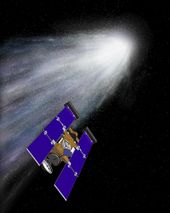
© NASA/JPL
This
is an artist's concept of the Stardust spacecraft beginning its flight
through gas and dust around comet Wild 2. The white area represents the
comet. The collection grid is the tennis-racket-shaped object extending
out from the back of the spacecraft.
This
is an artist's concept of the Stardust spacecraft beginning its flight
through gas and dust around comet Wild 2. The white area represents the
comet. The collection grid is the tennis-racket-shaped object extending
out from the back of the spacecraft.
NASA scientists
have discovered glycine, a fundamental building block of life, in
samples of comet Wild 2 returned by NASA's Stardust spacecraft.
"Glycine is an amino acid used by living organisms to make
proteins, and this is the first time an amino acid has been found in a
comet," said Dr. Jamie Elsila of NASA's Goddard Space Flight Center in
Greenbelt, Md. "Our discovery supports the theory that some of life's
ingredients formed in space and were delivered to Earth long ago by
meteorite and comet impacts."
Elsila is the lead author of a paper on this research accepted for publication in the journal Meteoritics and Planetary Science.
The research will be presented during the meeting of the American
Chemical Society at the Marriott Metro Center in Washington, DC, August
16.
"The discovery of glycine in a comet supports the idea that
the fundamental building blocks of life are prevalent in space, and
strengthens the argument that life in the universe may be common rather
than rare," said Dr. Carl Pilcher, Director of the NASA Astrobiology
Institute which co-funded the research.
Proteins are the workhorse molecules of life, used in
everything from structures like hair to enzymes, the catalysts that
speed up or regulate chemical reactions. Just as the 26 letters of the
alphabet are arranged in limitless combinations to make words, life
uses 20 different amino acids in a huge variety of arrangements to
build millions of different proteins.
Stardust passed through dense gas and dust surrounding the icy
nucleus of Wild 2 (pronounced "Vilt-2") on January 2, 2004. As the
spacecraft flew through this material, a special collection grid filled
with aerogel - a novel sponge-like material that's more than 99 percent
empty space - gently captured samples of the comet's gas and dust. The
grid was stowed in a capsule which detached from the spacecraft and
parachuted to Earth on January 15, 2006. Since then, scientists around
the world have been busy analyzing the samples to learn the secrets of
comet formation and our solar system's history.
"We actually analyzed aluminum foil from the sides of tiny
chambers that hold the aerogel in the collection grid," said Elsila.
"As gas molecules passed through the aerogel, some stuck to the foil.
We spent two years testing and developing our equipment to make it
accurate and sensitive enough to analyze such incredibly tiny samples."
Earlier, preliminary analysis in the Goddard labs detected
glycine in both the foil and a sample of the aerogel. However, since
glycine is used by terrestrial life, at first the team was unable to
rule out contamination from sources on Earth. "It was possible that the
glycine we found originated from handling or manufacture of the
Stardust spacecraft itself," said Elsila. The new research used
isotopic analysis of the foil to rule out that possibility.
Isotopes are versions of an element with different weights or
masses; for example, the most common carbon atom, Carbon 12, has six
protons and six neutrons in its center (nucleus). However, the Carbon
13 isotope is heavier because it has an extra neutron in its nucleus. A
glycine molecule from space will tend to have more of the heavier
Carbon 13 atoms in it than glycine that's from Earth. That is what the
team found. "We discovered that the Stardust-returned glycine has an
extraterrestrial carbon isotope signature, indicating that it
originated on the comet," said Elsila.
The team includes Dr. Daniel Glavin and Dr. Jason Dworkin of
NASA Goddard. "Based on the foil and aerogel results it is highly
probable that the entire comet-exposed side of the Stardust sample
collection grid is coated with glycine that formed in space," adds
Glavin.
"The discovery of amino acids in the returned comet sample is
very exciting and profound," said Stardust Principal Investigator
Professor Donald E. Brownlee of the University of Washington, Seattle,
Wash. "It is also a remarkable triumph that highlights the advancing
capabilities of laboratory studies of primitive extraterrestrial
materials."
The research was funded by the NASA Stardust Sample Analysis
program and the NASA Astrobiology Institute. NASA's Jet Propulsion
Laboratory, Pasadena, Calif., manages the Stardust mission for NASA's
Science Mission Directorate, Washington. Lockheed Martin Space Systems,
Denver, developed and operated the spacecraft.
Peter Davenport
NUFORC
Wed, 05 Aug 2009 23:45 UTC
Occurred: 8/1/2009 21:30 (Entered as : aug 1 2009 21:30)
Reported: 8/2/2009 6:26:00 AM 06:26
Posted: 8/5/2009
Location: Oakville (Canada), ON
Shape: Fireball
Duration: 5 mins
Two large balls of fire appearing in sky traveling east
Two bright red fireballs appeared traveling east close to Upper Middle
Road and Third Line, flying over the Abbey Park Recreation Center. Very
bright, like on fire, but looks like going east, not falling down, one
after another about 3 mins apart, then disappearing. Did not look like
a meteor, looked like huge ball of fire, very red in colour. Not an
airplane, perhaps space junk burning upon re-entry, but then why
wouldn't the fireballs continue descent to the ground, why keep going
east? Silent, no engine sounds.
Occasionally, I like to search Twitter for meteorite or meteorites.
Last night, a bunch of people in Canada suddenly started talking about
meteorites. A large meteor was seen - also known as a fireball or
bolide.
Those of us in the meteorite hobby know that when someone says
they saw a meteorite fall "nearby", it could mean almost anything -
there is a common confusion between distance and angular distance.
Still, with this many witnesses, it's certainly possible that something
reached the ground last night.
Below, I've compiled some of the highlights from Twitter. I've used ellipsis to indicate multiple tweets from the same user.
OTerry: Just saw a massive firery meteorite fall in north york. I wonder where it landed. It was either really big or very close.
derekpurdy: Saw an amazing meteor in
the sky tonight it was lit up for a second or two. Bright Green/blue
watched it break up, amazing. #Meteor #Ontario ... it was something
else! Never seen a meteor like that. Wow, all I can say is wow. (user
is at 44.264135, -78.064328)
ChaiLatteAddict: I think I just a
meteor! It made a bang and it fell from the sky and it was
blue-ish/green-ish. Please tell me how to confirm this! ... @ptc555 I
saw it east of the west part of Montreal, so it make sense we saw the
same thing if you're in Ont. Thank god you saw it too! ... Meteor
sighting in Canada. I'm thinking about going home to watch the news all
night. I wanna know where it fell and how big it is! ... I love the
power of Twitter, we all saw something thinking we were crazy but we
talk about it and it's an amazing feeling.
markdelete: i totally saw that possible meteor tonight in the sky. blue flash with red center. pretty crazy.
jsat2028: @argusrocks Hi, I saw it
land! It was as high as a telephone pole when I saw it I was no more
than 20 yards away. Report it, to who? ... I could see the ripples from
the heat it was blue, looked like a force field, and the head was a
fireball.
mackaytaggart: @kentboniface I work
at a talkradio station in Toronto....we're getting a lot of calls about
the meteorite. Where were you when you saw it? ... @MitchMirsky I work
@ a Toronto radio station. Getting lots of calls from listeners who
reported seeing it. May have landed in Barrie ON.
kentboniface: Just saw a meteorite large enough to light up the entire sky. Looked like lightning, but not a cloud in the sky.
MitchMirsky: Driving home tonite, we saw a meteorite land about 300 yards away.
ellehether: saw the most breathtaking meteor tonight! blue, green and orange! it was hugeeee!
ptc555: @colorsounds you saw the
meteorite in rochester? i saw it in toronto! ... @mackaytaggart i saw
the meteorite from Etobicoke (royal york and eglinton). i was looking
north.
colorsounds: Falling meteorite in #roc, burned green, about 8:50pm, very big and bright!
LouisSabourin: @argusrocks I saw at about 9 pm a meteorite: very impressive from Gatineau Qc was looking south-west: Ottawa, maybe
M_A_R_A #meteor: saw a giant bal of fire at St. Clair & Ossington....it was awesome!
DGConroy: Saw the meteor come across at Yonge and Eg... looked very close! (user is at 43.646557, -79.388714)
itemtrader: I just the the meteor to ! thought i was crazy - it was bright
craigebrown: I too saw a meteor flash across the sky. Very quick, very bright.
vdiddy1103: I just saw a shooting
star...or a comet...or a meteor. I wish Astronomy wasn't boring as f -
, maybe I would have learned something.
sarahhp89: May Have Just Seen Some Sort Of Meteor Flash :0 Stoked!
fadersmusic: Decided to go
investigate am old haunted hotel called the regal constellation and
witnessed a very impressive meteor fireball in the skies
ChrisDawe: Holy poo. Just saw what had to be a meteor burning up over Toronto! Anyone else see it?
CopySix: Just saw a small meteorite (shooting star) come down from my Barrie backyard - so close you could actually 'hear' it.
nevdawg: @ChaiLatteAddict I saw it from Milton, just south of Toronto. Pretty incredible.
BenTFleming: holy s - , I just saw a meteor crash.
memories_music: Just saw a meteorite!!!
dvasmusique: holy shit comet in
toronto! #toronto ... yeah i saw it ... spectacular ... i was on my way
to District 9 and i saw it over my apt. building on queen near
bellwoods
So, will anything be found? It couldn't hurt to look! If anyone has more information about this sighting, please contact me. If anything is found, I'm going to call this "the Twitter meteorite".
Date of Sighting: August 21, 2009
Time of Sighting: 5:30 AM PDT
Location of Sighting: Grand Rapids, Michigan
Description: I walked passed my balcony
doors to see what looked like a big red fire ball hovering in the sky
over Grand Rapids near the Ford Airport. I grabbed my digital camera
and it's battery which was charging as I put the battery in my camera
the object turned slightly side ways and then bolted out of sight. It
moved so fast I didn't have time to snap one darn picture.
Note: A hovering
fire ball that bolts out of sight isn't easily explainable. It is too
bad that the witness wasn't able to get a photo.
A church worker believes he has photographed a meteor blazing a trail above Cheltenham.
Matthew Pinless, 31, from Fairview, spotted the fast-moving object in
the sky while walking along Glenfall Street in Cheltenham at about 5pm
on Tuesday.
He said: "I was walking along the road with my young son and I spotted this object moving through the sky.
"At first I thought it was a plane, but then I could see it was moving too quickly for that.
"I managed to grab my phone and take a photograph, but it disappeared behind a cloud and never came out the other side.
"I don't subscribe to the UFO theory, so I am fairly sure it
was a meteor, but I would be interested to hear if anybody else saw it
in the sky."
A fiery meteor blazed a trail through the skies this morning, with sightings reported from Christchurch to Rotorua
Zoe Battersby was out for an early walk along Jimmy Amers beach in
Kaikoura at around 6.10am when she noticed a "very large meteor".
"It was very bright - the size of a streetlight. It looked like it fell into the sea," she said.
Alan Gilmore, resident superintendent of the University of
Canterbury Mt John Observatory said meteors enter the atmosphere over
New Zealand "several times a year" but he doubted that the rock made it
to the ground or water level.
"This meteor is very typical, and often they burn up at about
70kms up. It's very rare for them to actually land. They are coming
into a thicker atmosphere, traveling at 30km a second. The friction is
strong and they slow up and start to break up. It's like throwing a
stone at a concrete path," he said.
Gilmore said as the meteor breaks up, witnesses often see a bright flash known as a 'terminal fireball'.
He said meteors "burning up coming through air - white hot with
friction - start to glow". Meteors could be seen from as far as 100kms
up and could be seen from almost 1000kms away.
"They are spectacular, often a bright white centre which is
the actual rock, - a tiny, brilliant star - with a teardrop-shaped glow
that's brilliant emerald green caused by the oxygen and the radiation
coming off the rock," he said.
Gilmore said on the rare occasion that a meteor lands - then
becoming known as a meteorite - its arrival is often heralded with a
sonic boom caused by the temperature layers that exist closer to the
surface, below 60kms.
Because of the range of reported sightings, Gilmore expected the meteor entered the atmosphere somewhere over the North Island.
"The impression of closeness is deceptive. Because they are
bright, people think [the meteorite] landed a couple of paddocks away.
A church worker believes he has photographed a meteor blazing a trail above Cheltenham.
Matthew Pinless, 31, from Fairview, spotted the fast-moving object in
the sky while walking along Glenfall Street in Cheltenham at about 5pm
on Tuesday.
He said: "I was walking along the road with my young son and I spotted this object moving through the sky.
"At first I thought it was a plane, but then I could see it was moving too quickly for that.
"I managed to grab my phone and take a photograph, but it disappeared behind a cloud and never came out the other side.
"I don't subscribe to the UFO theory, so I am fairly sure it
was a meteor, but I would be interested to hear if anybody else saw it
in the sky."
UK UFO Sightings
Sat, 29 Aug 2009 23:08 UTC
Posted: August 29, 2009
Date of Sighting: Sunday 23rd August
Time: 6 am- 7am
Witness Statement: It looked like 2
meteorites heading downwards at a five o'clock angle visible to the
North East with a smoke tail behind. This was at around 6am. Within 10
minutes the sky was filled with aircraft, over a dozen some leaving
contrails, two jets leaving long chemical trails. Several craft headed
directly North East and were silent and left no trail at all. All
planes seemed to be heading or situated to the West. Could it all be
related?
Date of Sighting: August 30, 2009
Time of Sighting: 12:50 AM PDT
Location of Sighting: Yakima, Washington
Description:
We just saw something falling from the sky in Yakima,
Washington. At 12:50 AM my mom, my boyfriend and myself were outside in
her front yard looking through our telescope at planets. He was bent
down adjusting the lens and my mom and I were looking at the skies. All
of a sudden - out of nowhere - something fell from the skies just a
couple miles from us. We live in a nice neighborhood and didn't want to
take off racing after it so we just stood there screaming out about how
shocked we were at this sudden sighting. Normally, we would think it
was a falling star except it was not white. It was on fire and it was
smoking.
It had a long green trail behind it. You could see
green and red flames trailing flames behind it. To me, it looked liked
a meteor crashing, but my boyfriend thought it might be a falling
satellite or a small plane crashing. We never actually heard a crash.
There was no noise. If you hold a dinner plate out against the sky,
that was the size of the object and it had 30 to 40 feet of flames
behind it.
Could it be a crashed UFO? It seemed controlled by the way it was being
steered. The sighting lasted around 20 seconds. I didn't have my camera
on me this time! It was mid fast. It was obviously on fire. It trailed
an almost straight line not like an arc like a shooting star. I am
going to watch the news. Could you keep me informed if anyone else
reports this?
Additional Report (In Response to Questions):
It was headed north to south. We lost sight at the roof of a
house on the south side (of our home). On the same note my mom and I
drove around looking for this "meterorite" which is exactly what I
thought it was, but stumbled upon something else very strange (20
minutes after the sighting).
I am reviewing the pictures right now and will send them tomorrow if
there is anything to it. I want to go the same location tonight (of
possible landed object) to make sure before submitting a formal report.
I am not sure if it is even related to the "meteor". I can submit the
pictures anyway (within this e-mail) if you'd like.
Note:
This sure sounds like a meteorite. However, no other reports
have been received. A check of the local media in the Yakima has not
revealed any other sightings. Anyone who viewed this object or has seen
"landing or crash debris" in the Yakima area is urged to file a report.

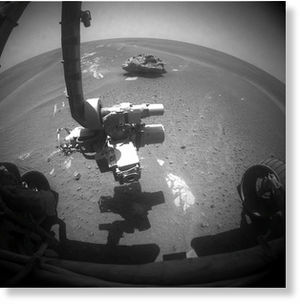

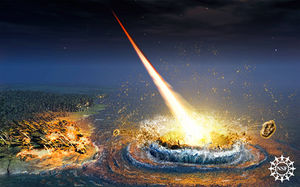
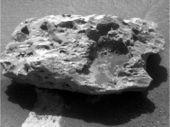



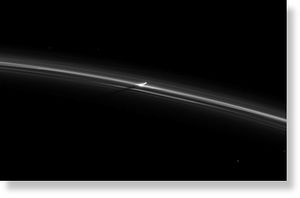
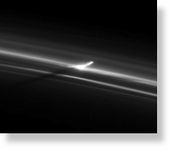
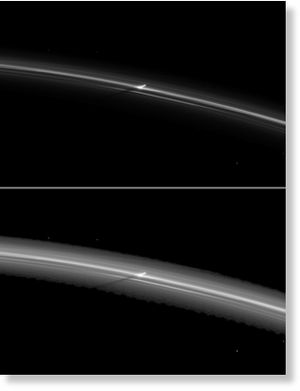

No comments:
Post a Comment